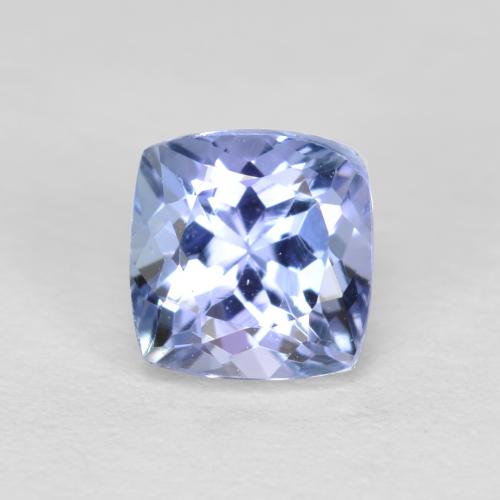

Hyman Saul brought the samples across the street to the Gemological Institute of America which correctly identified the new gem as a variety of the mineral zoisite. Saul, who later discovered the famous ruby deposits in the Tsavo area of Kenya, eliminated dumortierite and cordierite as possibilities, and sent samples to his father, Hyman Saul, vice president at Saks Fifth Avenue in New York.

Shortly thereafter, the stones were shown to John Saul, a Nairobi-based consulting geologist and gemstone wholesaler who was then mining aquamarine in the region around Mount Kenya. He assumed that the mineral was olivine ( peridot) but, after soon realizing it was not, he concluded it was " dumortierite" (a blue non-gem mineral). In July 1967, Manuel de Souza, a Goan tailor and part-time gold prospector living in Arusha (Tanzania), found transparent fragments of blue and blue-purple gem crystals on a ridge near Mererani, some 40 km (25 mi) southeast of Arusha. Commercial history Craft work on tanzanite In 1984, he was issued with a certificate for scientific discovery by the Tanzania Commission for Science and Technology. He was issued with a certificate of recognition three years later by the then President Julius Nyerere and a financial reward of Tsh 50,000 for his efforts. In January 1967, Jumanne Mhero Ngoma (originally from Same District, Kilimanjaro) stumbled upon the sparkling blue stones at the Mererani hills in the Kiteto district of the then Arusha Region (presently Manyara Region). There are many accounts of the discovery of tanzanite, but only one recognised by the government of Tanzania. Deposits are typically found in the "hinge" of isoclinal folds. The mineral is located in a relatively complex geological environment. Tanzanite was formed around 585 million years ago during the mid- Ediacaran Period by massive plate tectonic activity and intense heat in the area that would later become Mount Kilimanjaro. In 2002, the American Gem Trade Association chose tanzanite as a December birthstone, the first change to their birthstone list since 1912. The scientific name of "blue-violet zoisite" was not thought to be sufficiently consumer friendly by Tiffany's marketing department, who introduced it to the market in 1968.

after Tanzania, the country in which it was discovered. The gemstone was given the name 'tanzanite' by Tiffany & Co. In its rough state tanzanite is colored a reddish brown to clear, and it requires heat treatment to remove the brownish "veil" and bring out the blue violet of the stone. The blues appear more evident when subjected to fluorescent light and the violet hues can be seen readily when viewed under incandescent illumination. Tanzanite can also appear differently when viewed under different lighting conditions. Tanzanite is noted for its remarkably strong trichroism, appearing alternately blue, violet and burgundy depending on crystal orientation. Tanzanite is only found in Simanjiro District of Manyara Region in Tanzania, in a very small mining area approximately 7 km (4.3 mi) long and 2 km (1.2 mi) wide near the Mererani Hills. Tanzanite belongs to the epidote mineral group. Tanzanite is the blue and violet variety of the mineral zoisite (a calcium aluminium hydroxyl sorosilicate), caused by small amounts of vanadium. Present, dichroism or trichroism, depending on heat treatment Prismatic crystals with striations massive to columnar


 0 kommentar(er)
0 kommentar(er)
